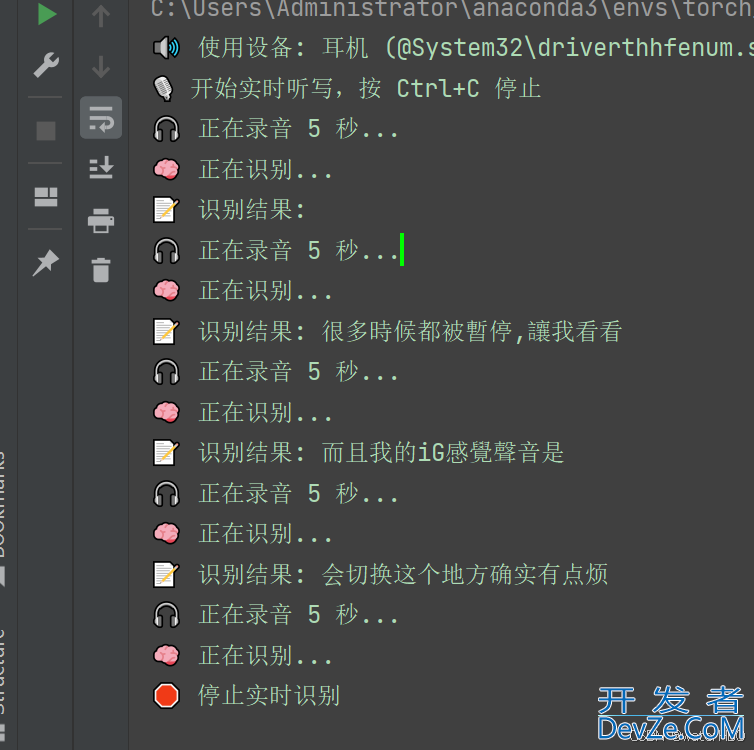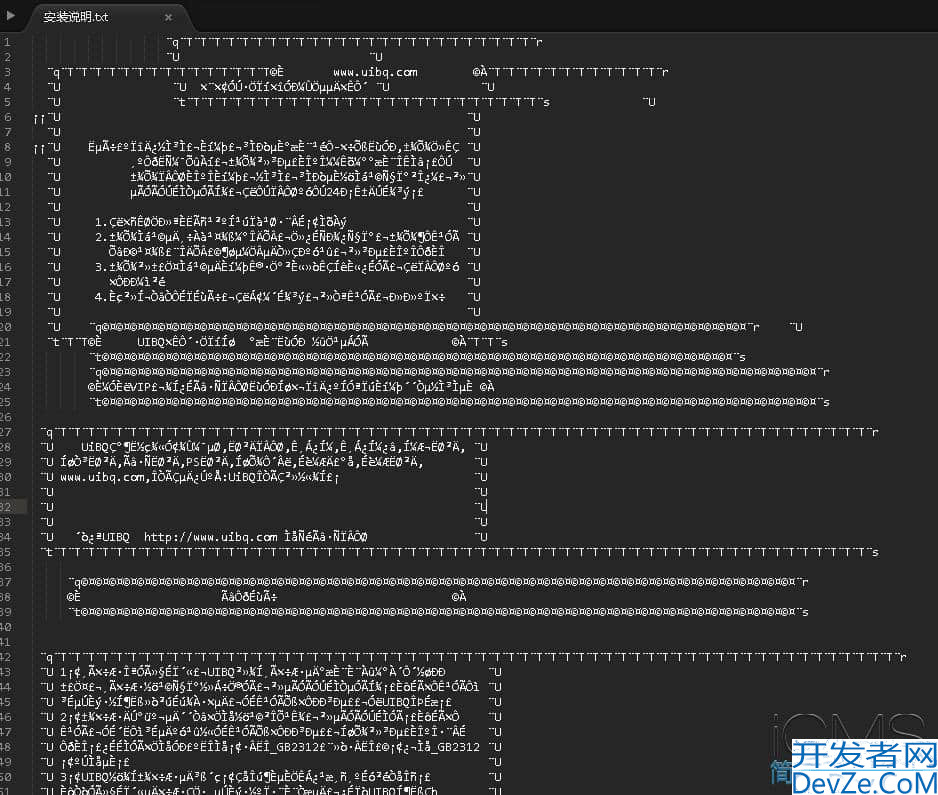python使用whisper读取蓝牙耳机语音并转为文字
目录
- 1. 起因目的
- 2. 先看效果
- 3. 过程
- 4. 结论 + todo
1. 起因目的
看到别人做了类似的效果。所以自己也想试试看。动手。
2. 先看效果

3. 过程
我用的是蓝牙耳机,EDIFIER W820NB
先找到声音,设置为 Hands-Free 模式
代码 1 ,查找设备名称, 看看哪个是能用的
我的设备, 能用的是 index=27
import sounddevice as sd
import numpy as np
import wave
import re
def list_input_devices():
print(" 可用音频输入设备列表:")
input_devices = []
devices = sd.query_devices()
for i, device in enumerate(devices):
if device['max_input_channels'] > 0:
device['index'] = i
print(f"Index {i}: {device['name']} - {device['max_input_channels编程']} channels - {device['default_samplerate']} Hz")
input_devices.append(devic编程客栈e)
return input_devices
def record_audio(device_info, seconds=10):
try:
device_index = device_info['index']
channels = 1 # 强制单声道
rate = 16000 # 强制 16000 Hz
print(f"\n️ 使用设备: {device_info['name']}")
print(f"➡️ 设备索引: {device_index}")
print(f"➡️ 通道数: {channels}")
print(f"➡️ 采样率: {rate} Hz\n")
print(" 检查设备配置...")
sd.check_input_settings(device=device_index, channels=channels, samplerate=rate, dtype='int16')
print("✅ 配置有效")
www.devze.com print("️ 正在录音中...")
audio_data = sd.rec(int(seconds * rate), samplerate=rate, channels=channels, dtype='int16', device=device_index)
sd.wait()
safe_device_name = re.sub(r'[^\w\s-]', '_', device_info['name']).replace('\r', '').replace('\n', '').strip()
output_file = f"{safe_device_name}_output.wav"
with wave.open(output_file, 'wb') as wf:
wf.setnchannels(channels)
wf.setsampwidth(2)
wf.setframerate(rate)
wf.writeframes(audio_data.tobytes())
print(f" 录音已保存为 {output_file}")
except sd.PortAudioError as pae:
print(f"❌ 音频设备错误:{pae}")
except OSError as ose:
print(f"❌ 文件系统错误:{ose}")
except Exception as e:
print(f"❌ 未知错误:{e}")
if __name__ == "__main__":
print(" 使用默认音频接口")
input_devices = list_input_devices()
if input_devices:
for device in input_devices:
if 'EDIFIER W820NB' in device['name'] and 'Hands-Free' in device['name']:
print(f"正在测试耳机设备: {device['name']}")
record_audio(device)
else:
print("❌ 没有可用的音频输入设备。")
代码 2 , 使用 whisper 转为文字效果很勉强,见文末总结。
import sounddevice as sd
import numpy as np
import wave
import tempfile
import os
import whisper
# 加载 Whisper 模型
model = whisper.load_model("medium") # 可改为 "tiny", "base", "small", "large"
# 音频录制设置
CHANNELS = 1 # 单声道,Hands-Free 模式通常只支持 1 通道
RATE = 16000 # 16000 Hz,适合 Hands-Free 模式
RECORD_SECONDS = 5 # 每次录音时长(秒)
DEVICE_INDEX = 27 # 已验证可用的设备索引
DEVICE_NAME = "耳机 (@System32\drivers\bthhfenum.sys,#2;%1 Hands-Free AG Audio%0;(EDIFIER W820NB 双金标版))"
def record_audio(seconds=RECORD_SECONDS):
try:
print(f" 正在录音 {seconds} 秒...")
# 使用 sounddevice 录制音频
audandroidio_data = sd.rec(
int(seconds * RATE),
samplerate=RATE,
channels=CHANNELS,
dtype='int16',
device=DEVICE_INDEX
)
sd.wait() # 等待录音完成
# 保存临时音频文件
with tempfile.NamedTemporaryFile(delete=False, suffix=".wav") as tmpfile:
with wave.open(tmpfile.name, 'wb') as wf:
wf.setnchannels(CHANNELS)
wf.setsampwidth(2) # 16-bit 音频
wf.setframerate(RATE)
wf.writeframes(audio_data.tobytes())
return tmpfile.name
except sd.PortAudioError as pae:
print(f"❌ 音频设备错误:{pae}")
return None
except Exception as e:
print(f"❌ 未知错误:{e}")
return None
def transcribe_audio(audio_file):
try:
print(" 正在识别...")
result = model.transcribe(audio_file, language="zh")
print(" 识别结果:", result['text'].strip())
except Exception as e:
print(f"❌ 语音识别失败:{e}")
finally:
if os.path.exists(audio_file):
os.remove(audio_file)
if __name__ == "__main__":
print(f" 使用设备: {DEVICE_NAME} (索引: {DEVICE_INDEX})")
print("️ 开始实时听写,按 Ctrl+C 停止")
try:
while True:
# 录制音频
audio_file = record_audio()
if audio_file:
# 进行语音识别
transcribe_audio(audio_file)
else:
print("⚠️ 录音失败,跳过识别")
# 短暂暂停,避免过于频繁的录音
sd.sleep(100) # 100 毫秒
except KeyboardInterrupt:
print(" 停止实时识别")
except Exception as e:
js print(f"❌ 程序错误:{e}")
4. 结论 + todo
- 开始的时候,加载模型比较慢。
- 能实现实时语音识别,但识别效果不佳,我猜测的原因是:
- 耳机质量太差,有些参数设置不够合理。
到此这篇关于python使用whisper读取蓝牙耳机语音并转为文字的文章就介绍到这了,更多相关python whisper读取蓝牙耳机并转文字内容请搜索编程客栈(www.devze.com)以前的文章或继续浏览下面的相关文章希望大家以后多多支持编程客栈(www.devze.com)!





 加载中,请稍侯......
加载中,请稍侯......
精彩评论